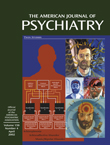Editing a volume on self-injurious behaviors might be characterized as an act of bravery. Few authors, excepting Dr. Armando Favazza, a contributor to this volume, have dedicated a book to this topic. The scope of the book is capacious, covering self-injurious behaviors encountered in autism, Tourette’s syndrome, mental retardation, psychosis, trichotillomania, and borderline personality disorder. Bravery is certainly involved in working with patients who injure themselves. As Guralnik and Simeon point out, “Clinicians are often scared away from work with such patients…[and, partially as a result,] a suspicious paucity of literature deals directly with treatment of self-injury” (p. 191). The editors’ objective was to target a book for clinicians yet make it “sophisticated in its data base and research findings.” Their predicament is that their heroic goal involves a clinical area about which little has been written. I might boldly suggest that the editors could have strengthened the book by examining the boggy ground between self-injurious and suicidal behavior. Unfortunately, these areas of inquiry have tended to have separate literatures and theoretical models, although patients’ intentions in injuring themselves are seldom purely separated.
Drs. Simeon and Hollander have enticed many prominent researchers to contribute on their areas of expertise. Dr. Favazza coauthors the first chapter on phenomenology and assessment of self-injurious behaviors. This chapter is by far the most original and meaningful contribution. Drs. Simeon and Favazza classify self-injurious behaviors into four categories that have vital clinical relevance: stereotypic behaviors, as found in mental retardation and autism; major self-injurious behaviors, as found in major psychosis; compulsive behaviors, as found in trichotillomania; and impulsive self-injurious behaviors, as found in borderline personality disorder. The rest of the book follows this categorization and discusses in more depth each of the types of self-injurious behaviors.
Dr. Dan Stein contributes chapters on the neurobiology and psychopharmacology of stereotypic and compulsive self-injurious behaviors. One chapter reviews the phenomenology, neurobiology, and treatment of psychotic self-injurious behaviors; however, little research exists that is specifically related to interventions for self-injurious behaviors in these patients. A detailed case example of a psychotic patient with major self-injurious behaviors might have been more enlightening. Dr. Larry Siever co-writes a chapter on the neurobiology and psychopharmacology of impulsive self-injurious behaviors. However, other reviews of the psychopharmacology of impulsive behavior exist that are more up-to-date in that they include recent double-blind placebo-controlled trials of divalproex and more thorough in that they include the evidence regarding novel antipsychotics. Dr. Marsha Linehan and colleagues review dialectical behavior therapy for impulsive self-injurious behaviors; however, most of this information has been published several times before. The book concludes with an interesting chapter on the different psychodynamic therapies for impulsive self-injurious behaviors.
This volume is part of the Clinical Practice Series; therefore, the length is quite manageable for the busy clinician. The book is nicely organized and free of production errors. Since little else exists on this topic, I am not timid in recommending the book to clinicians interested in patients who injure themselves.

